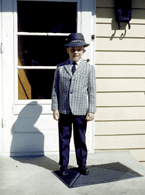
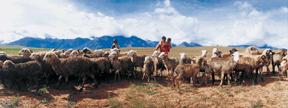
The question offers the potential for endless debate and a host of differing opinions. We decided to ask a number of Atlanta photographic services providers for their choices. Unlike art directors or designers, who have a vested interest in naming their friends or the shooter they last worked with, we thought these folksówho generally see a wide range of talentsówould come up with non biased nominations for the cityís top guns. With a promise of anonymity, we asked them to name those shooters whose work is consistently outstanding, regardless of specialty or reputation.
The four names who came up most often are the photographers featured below. We asked them to submit a recent photograph that would illustrate their talents and define their current interests. Along with conversations on the chosen image, we also discussed the state of photography, what drives their work, what it takes to garner recognition and how to maintain a good reputation in the pressure packed, ever changing world of commercial photography.
Although they specialize in different areas of photography, Jerry Burns, Jamie Cook, Jonathan Hillyer and Parish Kohanim can arguably be called the shooters who are setting the standards for great photography in Atlanta. Along with the respect of their peers, they all share the work ethic, aesthetic sensibility and discerning eye necessary to capture the fleeting essence of the moment, which leads to unforgettable images.


What does it take to build a reputation?
You need to be persistent, stay fresh and do the best work you can. Iíve been doing it for over 20 years now, and you just do what you do after a while. You just "Zen" your way along and try to do your best at every job. I guess some people appreciate that and keep coming back and tell their friends about me.
After youíve become established, do art directors and designers look to you for input, or do they just want you to execute what they give you?
I believe they look to me to co-create. I consider [photographers] to be more craftsmen than artists. Weíre like furniture builders. We know how to put something together and we know the mechanics, the artistic and aesthetic aspects of things, but we still do things with our hands. I donít like sitting at a computer and wiggling a mouse all day. Thatís not my idea of photography.
How does your best work come together?
There has to be a purpose, something to form a direction. It can be an idea youíre trying to expand upon or make more clear or interesting. Once you have that idea, you can jump off visually into interpreting it and bringing life to it. I try to provide another point of view. They may be standing in the northwest corner of the room, so I try standing in the northeast corner and see what I see from there. Itís not that itís any better, but itís different.Whatís the story behind the photo of the sheep with mountains in the background?
I was in Peru on a job for Masland Carpet, and the assignment was to shoot anything that looked cool. It was "National Geographic" style, capturing people, places and things. That particular shot was one of those times where it all came together. I was in a beautiful place, and I was feeling everything you feel about being in a great new place and experience, but I was also excited about photography. Shooting that picture pulled it all together for me. It was a moment. It just spoke to me.What does it say about you as a photographer?
Itís about being able to do something for an extended period of time and still find joy in doing it. To still be able to say, "Yes, I made the right choice," when I had this crazy idea about being a photographer a long time ago.How do you maintain a level where you get these opportunities as opposed to doing trite work every day?
Whenever I found myself shooting in some nondescript office cubicle or some factory, I turn to my assistants and say, "Get down on your knees because you have a great job. You could be doing this." There are a lot of people who hate their jobs and just plod on about them. We actually get excited about doing ours. You get to work with a lot of creative people, and make great friends and good relationships. You get to do something different every day. Every day is a field trip.
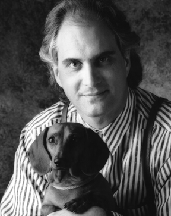
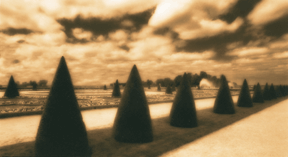
Iíd been doing it too long (laughs)! I íd been doing it since I was 22 years old and I got interested in other things like the digital side [of photography], different [techniques of photo] printing and opening my own web gallery. I was getting disenchanted with advertising and it wasnít fun anymore. When I came along, art directors would pick you for your skill rather than your price. It got to the point where I wasnít enjoying the work I was getting. What Iím doing now is what I want to do, when I want to do it and making as much, if not more, than I did doing [assignment] photography. I donít have any headaches.What is there about the landscapes youíre shooting now that attracted you to exploring that kind of photography?
I was noted for studio work, but the funny thing is, I started out as a location photographer. I had always missed the location part. What really started changing my mind about the whole thing was when my wife and I started traveling. I would shoot with nothing in mind and I enjoyed it. I came back and found out there were people who were willing to pay money for these personal photos.Has shooting without an art director or layout liberated your eye?
Thatís one of the things that had changed for me. Back in the Ď70s and Ď80s, they hired me for my eye. There was a layout, but it basically was a stick figure, so there was a lot of interpretation left. The clients would rely more on the advertising agencies and werenít as involved creatively as they are now. All of a sudden, we would get layouts, and what they wanted was what was on the layout. They wanted it exactly without any interpretation. To me, it was like I was a hired gun. They might as well have just rented my equipment and Iíd show them how to light it.How did the "Topiary Gardens at Versailles" photo come about?
When I shoot on vacation, I carry everything. I got my shooterís vest with four cameras hanging off, and tripods and all that stuff. We get up early in the morning, stay out until sunset, and I literally just walk around and see through the camera. On each trip, I take about two weeks and shoot around 140 rolls of film. When I come back, I get them processed and look through them.
When I saw it, I liked the design of this photo. Thatís all I go for. Iím not a documentary photographer. I try to find designs in landscape and nature and then I heavily retouch them. I took people out of that shot, I took trees that I didnít like out of it and put other trees in it. Part of my art is the photography and the pre-visualization of how that piece will work via the computer. I get a shot I like and then I sit there and think about how I can enhance it. I consider what Iím doing now a cross between photography and painting in the sense that a painter has a blank canvas and can put anything on it he wants.
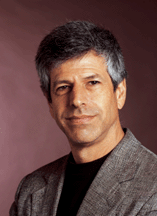

You need a lot of patience. You spend a lot of time waiting for the right light, or for interiors, spend a lot of time setting things up and paying attention to detail. On exteriors, itís spending a lot of time trying to anticipate what the light will do and waiting for the right moment.How do you go about creating an image that pleases both you and your client?
The thing I find most interesting is to try and understand what my client is after and then try and take it perhaps one step furtherótake the literal object theyíre after and make it into something slightly abstract so that it has a timeless quality, and capture it with a fleeting light, with colors that just happen for a moment.
How do you create a photo that is not only a good commercial image but also something that you want to display?
Itís when thereís an unexpected element or when something I hadnít anticipated comes upÖ or trying to push something without quite knowing where itís going. There seems to be an innate aspect of myself seeing something thatís predictable, yet knowing thereís something unpredictable or unexpected just beyond that. So I push beyond the expected hoping to find something that will surprise me or intrigue me.
Can you anticipate that a certain combination of circumstances will yield a great photo?
The most fun happens when I havenít anticipated that and something surprises me. I try to be prepared when the time is right, and when the moment is there, let the light inspire me. Itís a combination of anticipating that something is going to happen and being ready for it, so that when something exciting happens, I have the camera ready for it.
How does this photo define your style and look?
This is a childrenís medical center in Augusta, shot at twilight. I do a lot of twilights, and people know me to a large degree for them. I try and anticipate before the time comes what might be dramatic, as in what kind of lighting exists both outside and inside and how I might augment that lighting. Twilight only lasts about five minutes, so even though it can be pretty difficult, it can also be pretty exciting when everything comes together. I never really know what itís going to look like until I get the film back, so when I pick up the film, itís like a gift.
What do you want this photo to say about you to a potential client?
It says that I like to take reality and take it to an abstract perspective so that it both captures the spirit of what exists and what might be inside of me at the same time. I like to listen to my clients, understand as best as I can what theyíre after. I like to be part of their time. I take what theyíve given me and bring a unique vision to it that they may not have seen before. I feel confident that will enhance their work.
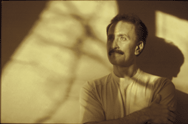

Passion and hard work. I like to keep changing directions. Years ago, I used to do a lot of product photography, this is a very heavy product oriented market. A few years ago, I decided Iíd done enough product photography and I wanted to do more people, portraits and lifestyle because I really enjoy working with people. I like to interact with them, and you canít interact with a still life. Changing direction is always good, and finding new ways to do things always makes it fun, and I try to make what I do fun.What do you look for in an assignment?
Most of all itís the challenge, the opportunity to try something new. I try to incorporate some of the new ideas Iíve been experimenting with into the project.How important is it for you to have input into the look of a project?
A lot of people come to me to add something to the project. There are times when I work with art directors who are definite about the layout and want me to shoot what they have, which is fineóbut if there is time, I also shoot it my way. That way, they can see a difference. Itís good to cover the bases. That doesnít always happen, because you run out of time, or there isnít enough budget to work on it and put an edge on the shot.What do you do to come up with a photo youíre happy with, the client is happy with and serves everybodyís purposes?
Every project is different and you approach it differently. You need to plan it to a point, but not overplan it. The rest is spontaneity, intuition and experience. Then, you just keep working at it until youíre happy. You have to try several different solutions for it and work out which one is the best. When youíve figured that out, thatís the way you go. This photo represents a different direction for you, how did it come about?
Two thirds of my work now is digital work, either shot with a digital camera or manipulated digitally one way or another. Thatís what the clients want these days. This photo, however, was shot in a more conventional manner. I used an 8x10 camera, which hardly anybody uses anymore. Mine has been sitting here and collecting dust for several years. I decided to go back to it and do more conventional work. That appealed to me as a different way of doing things. The 8x10 is a slow camera, and the challenge was to interact with the subject even though the camera was so slow. You have to keep the flow going.Why is it important for you to do this personal work?
Itís important because youíre not bound by layouts or any kind of restrictions. You can do anything you want. Itís your product, your vision. Invariably, every time Iíve done something experimental, Iíve used it one way or another in an assignment.After all these years, do you still have a sense of awe when it all comes together?
Absolutely. Thatís what keeps me going. If it wasnít for that, it would just be another job.